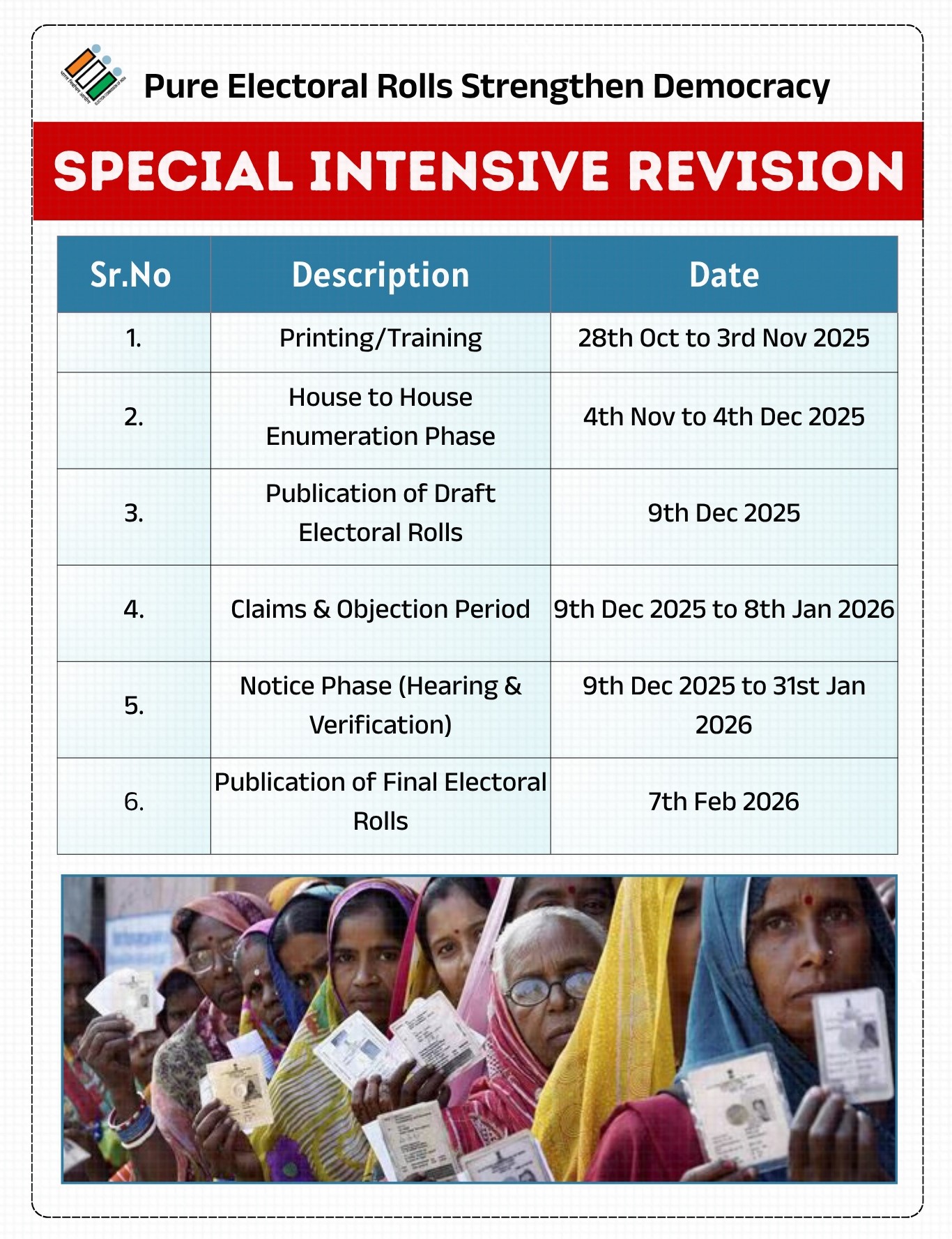Context:
The Election Commission of India (ECI) has recently launched the second phase of its nationwide “Special Intensive Revision” of electoral rolls, often referred to as SIR 2.0, aimed at cleaning, updating and rationalising the voter lists in selected States and UTs.
Why SIR 2.0?
The ECI has cited multiple factors motivating this special revision exercise:
-
- Large‐scale internal migration (both rural→urban and inter‐state), resulting in voters being registered in multiple locales, and many voters unregistered in their new places.
- Outdated rolls: Some elector entries date back many years and may include persons who have died, shifted permanently, or are otherwise ineligible.
- Political and administrative concerns over the “quality” of rolls: Several parties and election stakeholders have raised concerns about inflated, inflated or duplicate entries, and absence of periodic large‐scale revisional process.
- Large‐scale internal migration (both rural→urban and inter‐state), resulting in voters being registered in multiple locales, and many voters unregistered in their new places.

Coverage:
The SIR 2.0 (Phase‐2) will cover 12 States and Union Territories, as announced by the ECI:
-
- States: Andhra Pradesh (not in list), correction: Actually the 12 are: Chhattisgarh, Goa, Gujarat, Kerala, Madhya Pradesh, Rajasthan, Tamil Nadu, Uttar Pradesh, West Bengal.
- Union Territories: Andaman and Nicobar Islands, Lakshadweep, and Puducherry.
- States: Andhra Pradesh (not in list), correction: Actually the 12 are: Chhattisgarh, Goa, Gujarat, Kerala, Madhya Pradesh, Rajasthan, Tamil Nadu, Uttar Pradesh, West Bengal.
Key Features:
Each eligible citizen can verify their inclusion, request corrections (e.g., change of name, shift of address), apply for fresh inclusion, or object to entries (duplicate, deceased, shifted) during the claims/objections phase.
· Aadhaar is accepted as one of the optional valid documents for identity/verification (though not mandatory).
· New polling stations will be considered/created in high‐density areas (e.g., high‐rise buildings, RWAs, slums) to ensure manageable elector‐counts per station and better administrative oversight.
· One of the objectives is to ensure no polling station has more than ~1,200 electors (though exact cap may differ by State).
Conclusion:
SIR 2.0 represents a major push by the Election Commission of India to update and cleanse electoral rolls in selected States and UTs ahead of upcoming electoral events. While it offers an opportunity to strengthen the democratic foundation—by ensuring that each eligible citizen is included and duplicates/ineligible entries removed—it also poses significant administrative, operational and political challenges.






